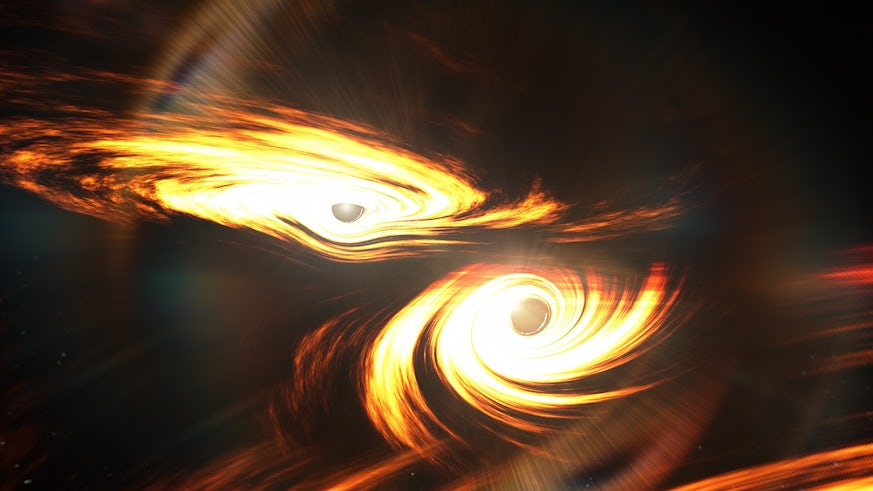Ripples from deep in the cosmos reveals most massive black hole detected yet
3 September 2020

The most massive gravitational-wave source yet has been detected – a binary black hole merger which produced a blast equal to the energy of eight suns, sending shockwaves through the universe.
Gravitational waves are produced when an extreme cosmic event occurs somewhere in the universe and, like dropping a rock in a pond, these events ripple across the cosmos, bending and stretching the fabric of space-time itself.
Since gravitational waves were first detected in 2015, from the merger of two black holes more than a billion light years distant, astronomers have witnessed a slew of signals from different cosmic collisions. Together these events have opened an entirely new window on the universe that offers a unique and powerful probe of the most extreme cosmic phenomena.
Based on how we understand the internal workings of stars, scientists believed that a black hole of this mass could not be formed by a collapsing star. So now, with firm evidence that such massive black holes do exist, astronomers need to rethink what is known about how black holes form.
The collision involved two inspiralling black holes, the first about 85 times as massive as the sun, and the second measuring about 65 times the sun’s mass.
When the two giant, spinning black holes smashed into each other, it created a behemoth black hole – with a mass of about 142 suns, and a short burst of gravitational-wave energy equivalent to the mass of around eight suns. The remnant black hole is the first clear detection of a so-called “intermediate mass black hole”, with a mass between 100 and 1,000 times that of the sun.
It also appears the signal came from a source about 17 billion light years from Earth, making it one of the most distant gravitational-wave sources detected so far.

Once again, the latest gravitational wave observation challenges our understanding of the universe.
The signal, named GW190521, was observed on 21 May 2019 by two of the most sensitive scientific instruments ever built – the Virgo detector in Italy and the twin LIGO (Laser Interferometry Gravitational-Wave Observatory) detectors in the United States.
The international team of scientists, who make up the LIGO Scientific Collaboration and the Virgo Collaboration, have reported their findings in two papers published today. Cardiff University has been a member of LIGO since its inception.
Professor Stephen Fairhurst, from Cardiff University’s School of Physics and Astronomy said: "Once again, the latest gravitational wave observation challenges our understanding of the universe. We have observed the merger of the most massive pair of black holes to date, including one which is too massive to have formed directly from the collapse of a massive star. Future observations will tell us how common these massive black holes are, and provide further clues to their origins. However, they’re also sure to provide new and unexpected observations to challenge our theories in new ways."
Until now, scientists did not think a black hole of this size could exist – but with evidence now suggesting otherwise, it has prompted astronomers to rethink what is known about black holes.
Dr Vivien Raymond of the School of Physics and Astronomy said: "This gravitational-wave signal is pushing the frontier of our knowledge of the dark universe. Inferring the properties of the objects at its source was a new challenge, which we were able to overcome with the newest signal models and our constantly improved understanding of the gravitational-wave detectors themselves. And now, and in particular thanks to the work in those areas at Cardiff University, that’s yet another family of invisible objects that we can study and learn from."
The detections were only made possible by combining UK technology, sustained international funding, and enormous dedication and hard work by more than a thousand scientists from around the world. The LIGO Scientific Collaboration comprises over 1,000 scientists from 17 countries, and includes researchers from ten UK universities (Glasgow, Birmingham, Cardiff, Strathclyde, West of Scotland, Sheffield, Edinburgh, Cambridge, King College London and Southampton).







